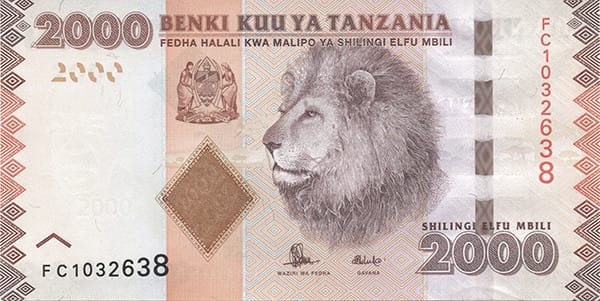Lions, often celebrated as the “kings of the jungle,” hold a unique place in the animal kingdom for their majestic appearance and distinct social structure. Unlike other big cats, which lead largely solitary lives, lions are inherently social creatures. They live in groups known as “pride,” which are complex, matriarchal societies comprising two to eighteen females (lionesses), their offspring, and a transient coalition of one to two adult males. This social system facilitates shared responsibilities among members, including hunting, defending territory, and caring for the young. Such enduring ties within pride exemplify a remarkable level of cooperation and social bonding rarely observed in other feline species.
The territories of lion pride can span vast areas necessary to support their needs for food, water, and breeding grounds. These territories are fiercely defended against rival pride and other threats, with lionesses often taking the lead in protection and hunting. The communal care for cubs within a pride allows for a higher survival rate, as all the lionesses in a group participate in rearing the young, irrespective of kinship. This shared parenting responsibility ensures that the pride’s offspring have a better chance at reaching adulthood, thus sustaining the pride’s future.
Historically, lions roamed across Europe, Asia, and Africa, reigning over a far more extensive range than they do today. However, their current distribution is limited primarily to sub-Saharan Africa, with a small, isolated population in the Gir Forest of India. Over the last quarter-century, the lion population has suffered a drastic decline, shrinking by half due to various factors.
The lion’s disappearance from 94% of its historic range underscores the urgent need for effective conservation measures. Protecting their natural habitats, implementing sustainable coexistence strategies for human and lion populations, and regulating hunting practices are crucial steps in ensuring the survival of this iconic species.
Distribution
 Afghanistan
Afghanistan Official estimate
Official estimate
 Algeria
Algeria Official estimate
Official estimate
 Angola
Angola Benin
Benin Botswana
Botswana Burkina Faso
Burkina Faso Burundi
Burundi Official estimate
Official estimate
 Cameroon
Cameroon Central Af. Rep.
Central Af. Rep. Chad
Chad Congo-Brazzaville
Congo-Brazzaville Official estimate
Official estimate
 Côte D’ivoire
Côte D’ivoire DR Congo (Kinshasa)
DR Congo (Kinshasa) Djibouti
Djibouti Official estimate
Official estimate
 Egypt
Egypt Official estimate
Official estimate
 Equatorial Guinea
Equatorial Guinea Official estimate
Official estimate
 Eritrea
Eritrea Official estimate
Official estimate
 Eswatini
Eswatini Ethiopia
Ethiopia Gabon
Gabon Official estimate
Official estimate
 Gambia
Gambia Official estimate
Official estimate
 Ghana
Ghana Guinea-Bissau
Guinea-Bissau Guinea
Guinea India
India Iran
Iran Official estimate
Official estimate
 Iraq
Iraq Official estimate
Official estimate
 Israel
Israel Official estimate
Official estimate
 Jordan
Jordan Official estimate
Official estimate
 Kenya
Kenya Official estimate
Official estimate
 Kuwait
Kuwait Official estimate
Official estimate
 Lebanon
Lebanon Official estimate
Official estimate
 Lesotho
Lesotho Official estimate
Official estimate
 Liberia
Liberia Official estimate
Official estimate
 Libya
Libya Official estimate
Official estimate
 Malawi
Malawi Mali
Mali Mauritania
Mauritania Official estimate
Official estimate
 Morocco
Morocco Official estimate
Official estimate
 Mozambique
Mozambique Namibia
Namibia Niger
Niger Nigeria
Nigeria Pakistan
Pakistan Official estimate
Official estimate
 Rwanda
Rwanda Saudi Arabia
Saudi Arabia Official estimate
Official estimate
 Senegal
Senegal Sierra Leone
Sierra Leone Official estimate
Official estimate
 Somalia
Somalia South Africa
South Africa South Sudan
South Sudan Sudan
Sudan Syria
Syria Official estimate
Official estimate
 Tanzania
Tanzania Togo
Togo Tunisia
Tunisia Official estimate
Official estimate
 Turkey
Turkey Official estimate
Official estimate
 Uganda
Uganda Zambia
Zambia Zimbabwe
ZimbabweRecent updates
March 2024: The Ugandan Minister of Tourism and Wildlife reported a 45% decline in the country’s lion population over nearly 20 years, dropping from 493 to 275 in 2023, due to increasing human-wildlife conflicts.
January 2024: The Kenya Wildlife Service reports a 25% increase in Kenya’s lion population over the past decade, growing from 2,000 in 2010 to 2,589 in 2021, with even higher numbers in 2023.
April 2023: A lion has been spotted in Chad’s Sena Oura National Park for the first time in almost 20 years. Researchers had previously believed the species was extinct in the area near Chad’s border with Cameroon.
May 2021: The South African government has taken a crucial step toward animal protection by prohibiting the captivity of lions in South Africa and banning the commercial use of captive lions and their byproducts, as outlined in a recent report. Not to mention that 85% of lions there in game reserves and captivity.
Did you know?
- Half of the cubs can not reach the age of one.
- Males in pride patrol, mark, and guard the pride’s territory and sometimes cubs.
- Lions are opportunistic hunters as well as scavengers. They even love “fast food” such as wildebeest, gemsbok, zebra, buffalo, and giraffe.
- Trophy hunting also threatens lions in protected habitats like national parks by targeting adult males for hunting, creating “vacuum effect”.
- They are the only cats who roar together, even young cubs joining in with their mews, isn’t that lovely?
Anything we've missed?
Help us improve this page by suggesting edits. Glory never dies!
Suggest an editGet to know me
Terrestrial / Aquatic
Altricial / Precocial
Polygamous / Monogamous
Dimorphic (size) / Monomorphic
Active: Diurnal / Nocturnal
Social behavior: Solitary / Pack / Herd / Troops
Diet: Carnivore / Herbivore / Omnivore / Piscivorous / Insectivore
Migratory: Yes / No
Domesticated: Yes / No
Dangerous: Yes / No
Lion on banknotes










